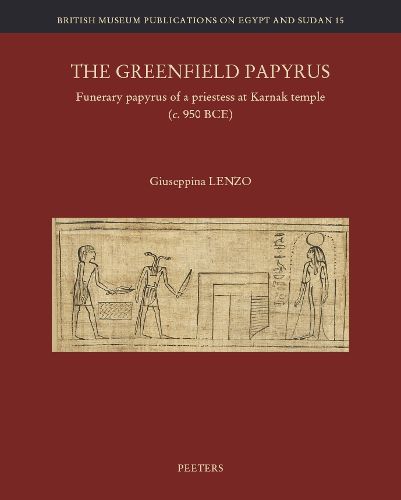Readings Newsletter
Become a Readings Member to make your shopping experience even easier.
Sign in or sign up for free!
You’re not far away from qualifying for FREE standard shipping within Australia
You’ve qualified for FREE standard shipping within Australia
The cart is loading…






The Greenfield Papyrus (P. BM EA 10554), at more than 37m in length, is the longest funerary papyrus surviving from ancient Egypt. Its content is highly original because it combines spells from the Book of the Dead with a mythological section, as well as with hymns and litanies stemming from the context of temple liturgies. Furthermore, the selection of spells from the Book of the Dead provides very important insights into the Third Intermediate Period (1069-664 BCE). The Greenfield Papyrus is also of central importance to an understanding of the evolution of the Book of the Dead, after the New Kingdom (1539-1069 BCE) and before the Late and Ptolemaic Periods (664-30 BCE). The owner of the papyrus, Nestanebetisheru, occupied a very important position as priestess in the temples of Karnak. Since this role probably gave her access to temple archives, she may have selected the texts of her papyrus herself.
$9.00 standard shipping within Australia
FREE standard shipping within Australia for orders over $100.00
Express & International shipping calculated at checkout
The Greenfield Papyrus (P. BM EA 10554), at more than 37m in length, is the longest funerary papyrus surviving from ancient Egypt. Its content is highly original because it combines spells from the Book of the Dead with a mythological section, as well as with hymns and litanies stemming from the context of temple liturgies. Furthermore, the selection of spells from the Book of the Dead provides very important insights into the Third Intermediate Period (1069-664 BCE). The Greenfield Papyrus is also of central importance to an understanding of the evolution of the Book of the Dead, after the New Kingdom (1539-1069 BCE) and before the Late and Ptolemaic Periods (664-30 BCE). The owner of the papyrus, Nestanebetisheru, occupied a very important position as priestess in the temples of Karnak. Since this role probably gave her access to temple archives, she may have selected the texts of her papyrus herself.